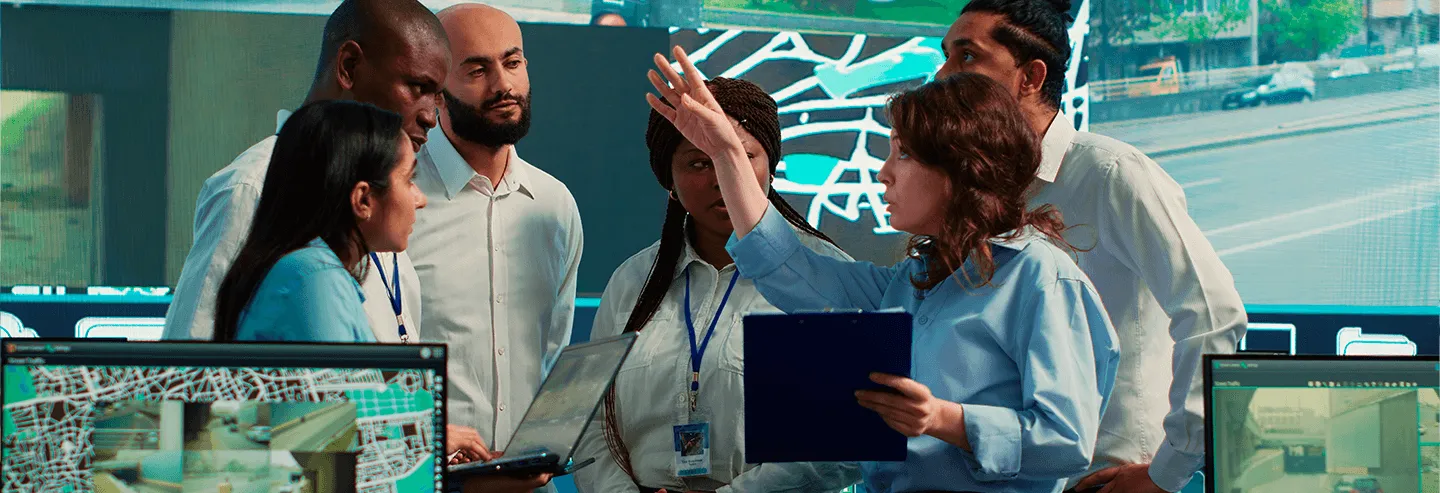1. Artificial Intelligence (AI) and Machine Learning (ML) Integrated into Development
Description
Artificial intelligence and machine learning are no longer the exclusive tools of data science teams, but have become strategic allies for developers. These technologies are being integrated into development processes to improve software efficiency and quality.
Development Impact
- Code Automation: AI tools can generate code base faster and with fewer errors.
- Automated Testing: AI can detect bugs before they reach production, improving software quality.
- IDE support: Integrated development environments (IDEs) now offer auto-completion and AI-based suggestions, making developers' work easier.
Examples
- GitHub Copilot: Uses AI to suggest lines of code and complete functions.
- DeepCode: Analyzes code for errors and vulnerabilities using machine learning.
2. Low-Code/No-Code Development
Description
Low-code/no-code development allows users to create applications with minimal hand coding, using visual interfaces and predefined configurations. This trend is democratizing software development, allowing non-technical people to create functional applications.
Development Impact
- Development Acceleration: Allows applications to be created quickly, reducing development time.
- Accessibility: Facilitates the creation of software by non-technical users.
- Cost Reduction: Reduces the need to hire specialized developers for simple projects.
Examples
- OutSystems: Low-code development platform that enables the creation of enterprise applications.
- Bubble: No-code tool to create web applications without writing code.
3. Sustainable Development and Green Coding
Description
Sustainable development and green coding focus on creating software that minimizes environmental impact. This includes optimizing code to reduce energy consumption and using efficient hardware.
Development Impact
- Energy Efficiency: Code optimization and use of efficient processors to reduce energy consumption.
- Serverless architectures: Execution on demand to minimize the use of resources.
- Green Coding Practices: Implementation of techniques and tools that promote sustainability in software development.
Examples
- ARM processors: Used for their energy efficiency.
- AWS Lambda: Serverless platform that executes code on demand.
4. Augmented Reality (AR) and Virtual Reality (VR) in Enterprise Applications
Description
Augmented reality (AR) and virtual reality (VR) are being integrated into enterprise applications to enhance the user experience and offer innovative solutions. These technologies enable the creation of immersive and interactive environments that can be used in a variety of industries.
Development Impact
- Immersive Experiences: Creation of applications that offer immersive experiences for training, design and simulation.
- Productivity Improvement: Use of AR and VR to improve efficiency in business processes.
- Innovation: Development of new solutions and products based on these technologies.
Examples
- Microsoft HoloLens: Mixed reality device used in enterprise applications.
- Unity: Development platform for creating AR and VR applications.
5. Security as a Development Priority
Description
Security has become a priority in software development due to the growing threat of cyber-attacks and the implementation of strict regulations. Developers must integrate security practices at all stages of the development cycle.
Development Impact
- Zero Trust: Security model that does not trust by default any component, not even internal.
- Multifactor Authentication (MFA): Implementation of MFA as a standard to improve security.
- Data Encryption: Use of end-to-end encryption to protect information.
- Code Audits: Conducting code and compliance audits as part of the development cycle.
Examples
- OWASP: Provides resources and tools to improve security in software development.
- Auth0: Authentication platform that facilitates the implementation of MFA.
6. Progressive Web Applications (PWA)
Description
Progressive Web Apps (PWA) combine the best of web and mobile apps, delivering fast and seamless experiences on any device. PWAs work offline, are installed on the device as an app and consume fewer resources.
Development Impact
- User Experience: Improve the user experience by offering fast and accessible applications.
- Cost Reduction: Lowers development costs by combining web and mobile application features.
- Flexibility: Allows companies to offer accessible solutions on multiple devices.
Examples
- Google Lighthouse: Tool to audit and improve the quality of PWAs.
- Workbox: Library to facilitate the creation of PWA.
7. Native Cloud and Serverless Architecture
Description
Cloud-native infrastructure and serverless architecture are gaining ground, enabling developers to create scalable and flexible applications. These technologies allow code to run only when needed, optimizing performance and reducing costs.
Development Impact
- Scalability: Facilitates the creation of applications that can automatically scale according to demand.
- Cost Reduction: Minimizes costs by executing code on demand.
- Resiliency: Improves application resiliency by distributing the load among multiple servers.
Examples
- Docker: Platform for the creation and management of containers.
- Kubernetes: Container orchestration system.
- AWS Lambda: Serverless platform for executing code on demand.
Trends in software development are changing the industry, offering new opportunities and challenges for developers and enterprises. AI and ML integration, low-code/no-code development, sustainable development, augmented and virtual reality, security, PWAs and native cloud infrastructure are some of the major trends that are transforming the way we create and use software.
Adapting to these trends is crucial to stay competitive in the market and take advantage of the opportunities they offer. By keeping up with the latest innovations and practices, developers can create more efficient, secure and sustainable solutions, contributing to the advancement of the software industry.









